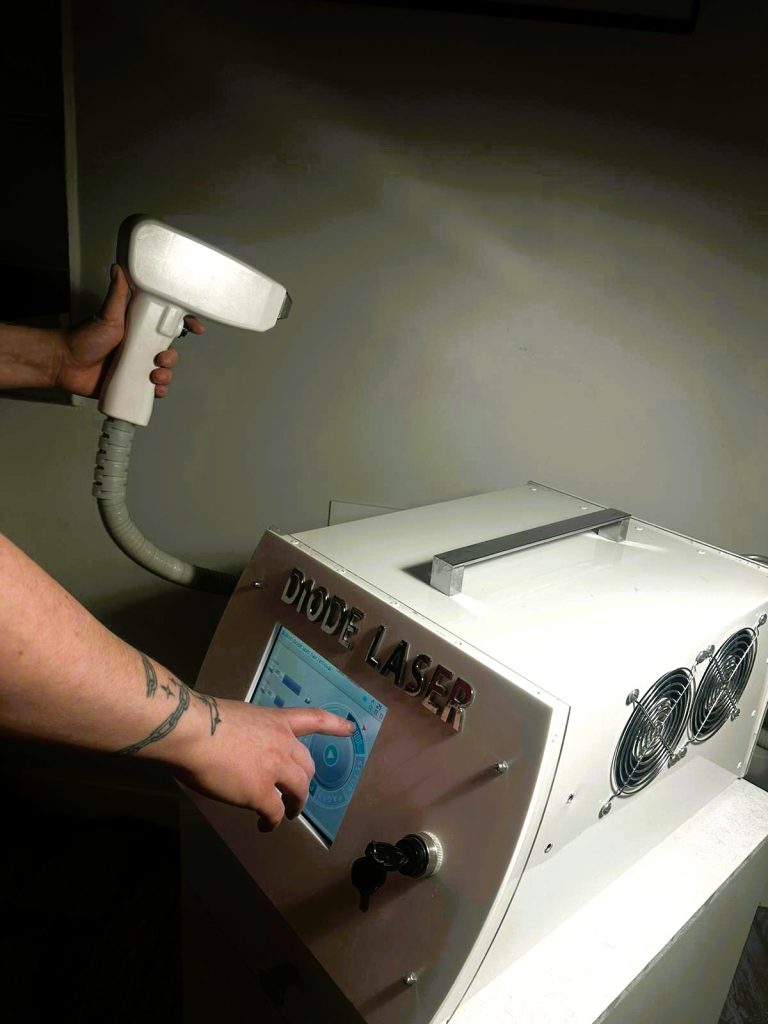Laser Power and Hair Removal Effectiveness: Does Power Matter?
Blog BackTable of Contents:
- Understanding Laser Energy
- The Importance of Pulse Duration
- Impact of Pulse Duration on Treatment Effectiveness
- In summary

When discussing professional hair removal, laser power is a key factor that should be considered in the context of energy and pulse duration. These three parameters are closely interlinked and play a crucial role in determining the effectiveness of the treatment.
Understanding Laser Energy
Laser energy refers to the amount of heat we need to deliver to the hair follicle to remove it effectively. Hair follicles, as part of human tissue, contain a significant amount of water. To effectively "cook" this water, the laser must supply enough energy to raise the temperature to approximately 90 degrees Celsius.
The energy level used in hair removal treatments should always be chosen individually. Factors such as hair thickness, density, skin color, and laser power all influence the energy needed for optimal results. However, it’s impossible to fully predict how a patient’s skin and hair will respond to treatment. Therefore, it is extremely important to start with a safe energy level and gradually increase it until the desired thermal response is achieved.
The Importance of Pulse Duration
Another important parameter is pulse duration, which should be set based on the so-called thermal relaxation time. Thermal relaxation time is the period during which the hair follicle loses half of its heat after being heated. For instance, if a hair follicle is heated to 100 degrees Celsius, the relaxation time is the time it takes for its temperature to drop to 50 degrees.
Understanding this concept is crucial when setting the laser’s pulse duration. If the pulse duration exceeds the relaxation time, heat will “escape” from the follicle, requiring more energy to achieve the same effect. Conversely, if the pulse duration is shorter than the relaxation time, all the energy remains in the follicle, which may result in insufficient action.
Using lasers calibrated to work with the thermal relaxation times of hair follicles, which typically range from 5 to 20 milliseconds, can lead to more efficient treatments. By optimizing the pulse duration to match the relaxation time, practitioners can use less energy, reducing the risk of skin burns and minimizing patient discomfort.
Impact of Pulse Duration on Treatment Effectiveness
Shorter pulse durations lead to less heat dispersion, which is particularly important for light-colored hair. Due to the low melanin content in lighter hair, any energy loss significantly reduces the treatment’s effectiveness. By minimizing heat spread, shorter pulses help retain energy within the hair follicle, maximizing treatment effectiveness.
In summary
In summary, laser power is indeed a critical factor in the effectiveness of hair removal treatments. However, it is essential to consider it within the context of energy and pulse duration. A well-calibrated laser that effectively balances these parameters can result in effective hair removal with minimal discomfort and reduced risk of side effects. By understanding and applying these principles, cosmetologists can deliver a higher standard of treatment and achieve better results for their clients.








